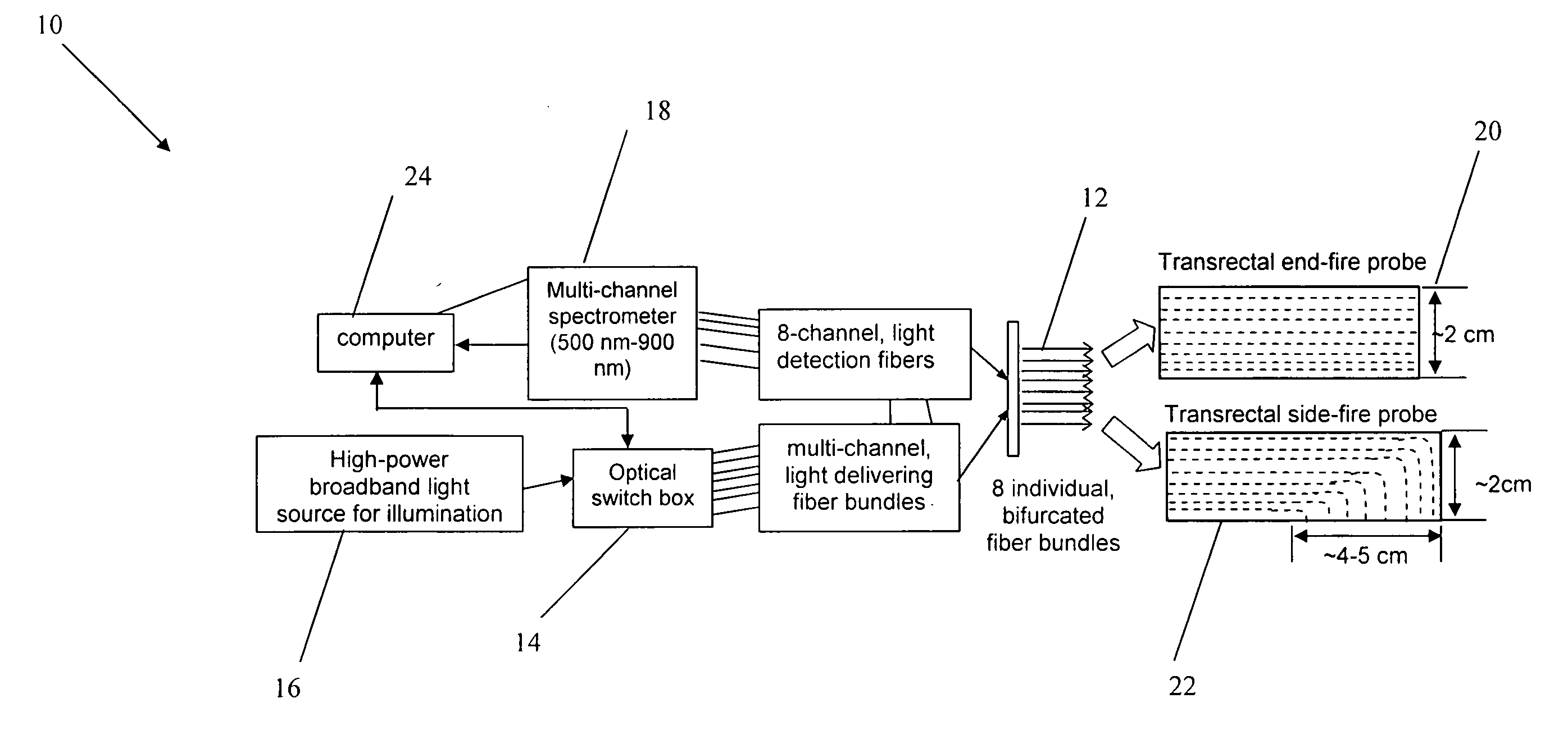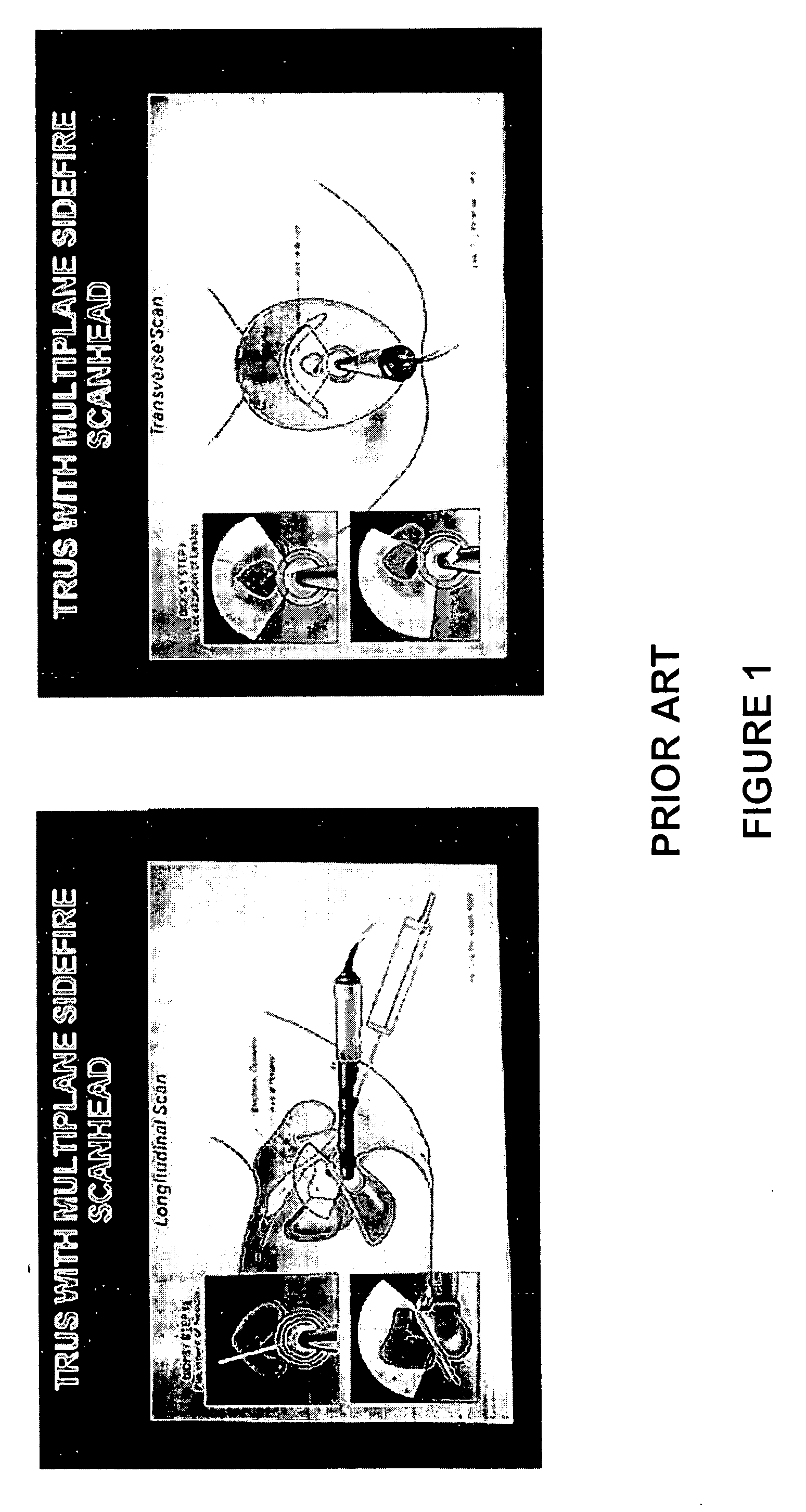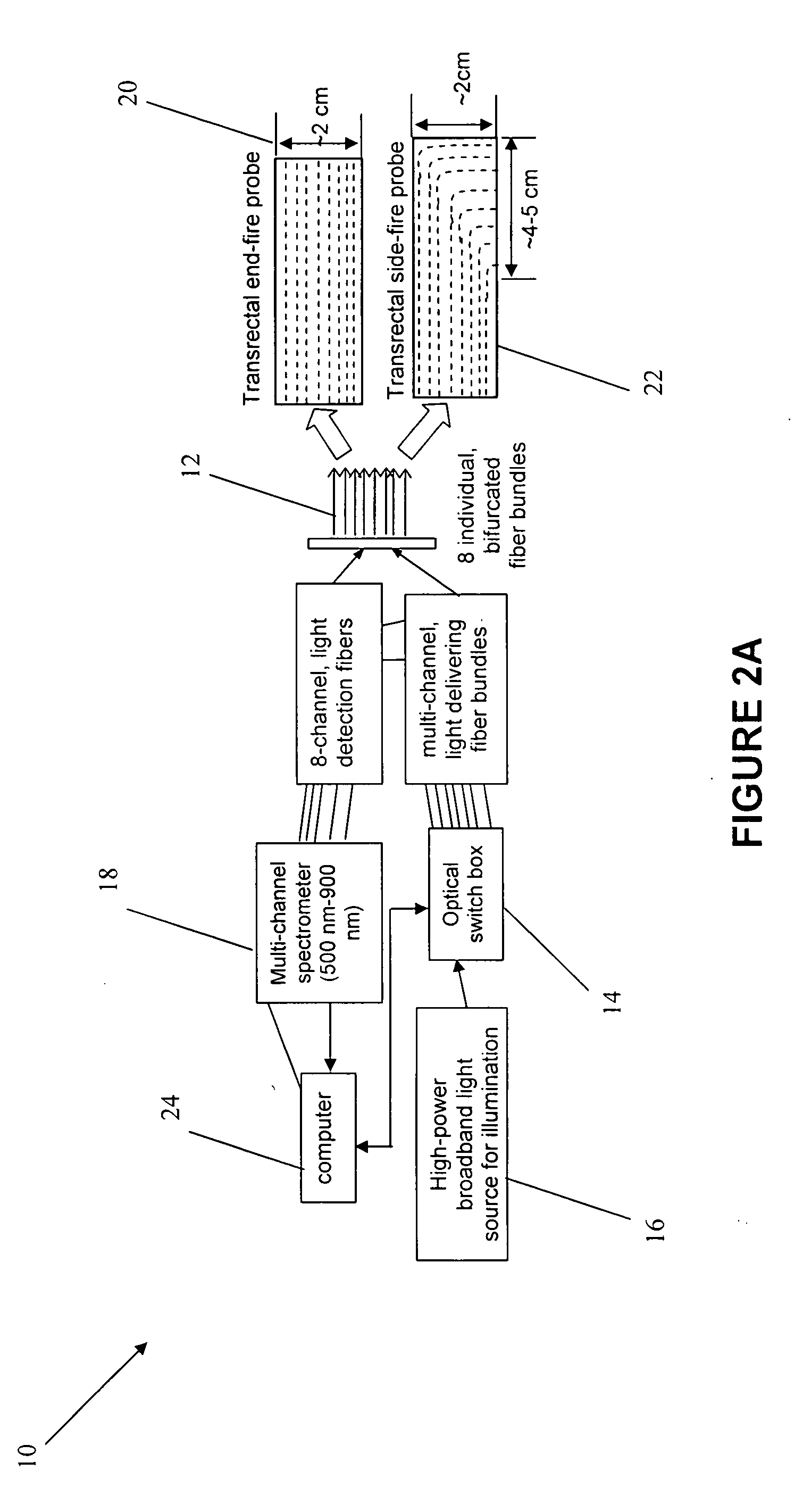Near infrared transrectal probes for prostate cancer detection and prognosis
a transrectal probe and prostate cancer technology, applied in the field of cancer detection, can solve the problems of low sensitivity and specificity for detecting prostate cancer, inability to detect early stages of prostate cancer, so as to achieve routine, early and more accurate detection, and enhance the knowledge of the prostate art.
- Summary
- Abstract
- Description
- Claims
- Application Information
AI Technical Summary
Benefits of technology
Problems solved by technology
Method used
Image
Examples
Embodiment Construction
[0032] While the making and using of various embodiments of the present invention are discussed in detail below, it should be appreciated that the present invention provides many applicable inventive concepts that can be embodied in a wide variety of specific contexts. The specific embodiments discussed herein are merely illustrative of specific ways to make and use the invention and do not delimit the scope of the invention.
[0033] The present invention provides a broadband, multi-channel, tomographic NIR imaging system 10, particularly designed for the prostate cancer studies. While it is simpler to use just 2-4 wavelengths to obtain hemodynamic parameters, the present invention derives accurate concentrations of several intrinsic chromophores presented in tissue. A system in accordance with the present invention, therefore, can be used to efficiently separate both absorption and reduced scattering coefficients without any non-uniqueness problem. Thus, the present invention unique...
PUM
 Login to View More
Login to View More Abstract
Description
Claims
Application Information
 Login to View More
Login to View More - R&D
- Intellectual Property
- Life Sciences
- Materials
- Tech Scout
- Unparalleled Data Quality
- Higher Quality Content
- 60% Fewer Hallucinations
Browse by: Latest US Patents, China's latest patents, Technical Efficacy Thesaurus, Application Domain, Technology Topic, Popular Technical Reports.
© 2025 PatSnap. All rights reserved.Legal|Privacy policy|Modern Slavery Act Transparency Statement|Sitemap|About US| Contact US: help@patsnap.com



